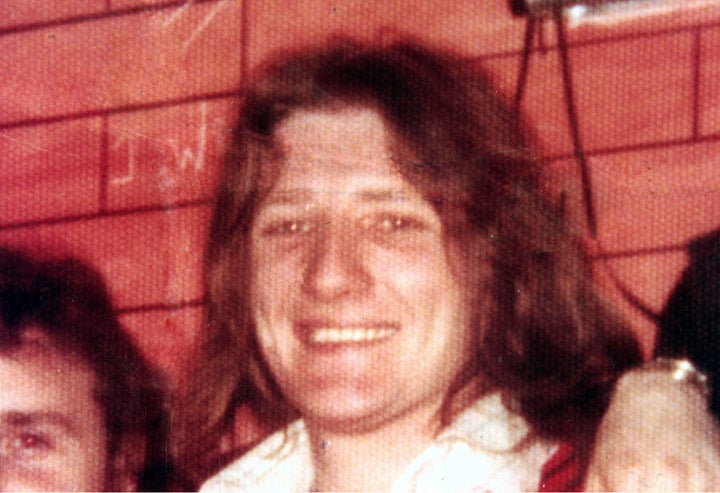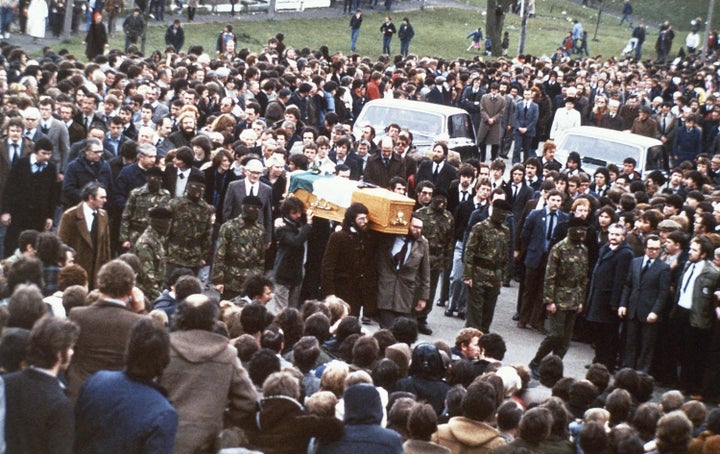There is no moving footage of Bobby Sands.
Even as an elected MP, the combination of his youth and the machinations of the British Government meant that the only times we’ve seen the Irish prisoner are a few early crowd photographs and that one defining picture - the image of a sadly smiling young man that became the cover of a thousand T-shirts and transformed him into a Che Guevara for Northern Ireland, even while he stayed tucked away, committed to the two-month hunger strike that would eventually finish his life, aged 27.
These events are now 35 years old, but remain seared on the consciousness of everyone in the UK and Irish republic who lived through them. The spring of 1981 saw an intense struggle between this silent man, locked in a prison cell, and the might of the British Government.

Now, those 66 days are told in intimate detail, as director Brendan Byrne follows how this young man kept control over his tragic destiny, and became an icon to some, remaining a terrorist to others.
We talked to the director about the events that turned an enigmatic prisoner into a still divisive figure of 20th century politics.
Why this film, why now?
”35 years felt like a time where people could look back with an open mind, an honest reflection. Even 20 years after his death, even post-Good Friday, green and orange were still in their camps. It might not have got off the ground 10 years ago, still too toxic, too difficult, it was better to let sleeping dogs lie, but 35 years gave us that opportunity.
“I grew up in a working class Catholic house in Belfast, in a Nationalist/Republican stronghold. I knew my neighbours, some of whom got involved in the IRA, these were guys who I grew up and played football with. I thought they were decent people, I wouldn’t have done what they did, but I knew the black and white pariah stereotypes didn’t add up either.
“In Bobby Sands, I wanted to explore this person that I didn’t know much more about, than the picture on the wall. How could he be such a significant figure in 20 century Ireland? There is a narrative deficit. I felt I should know that story, and I should tell it, to try to humanise a group of people who were young and believed in something, who had so easily been demonised by another group of people.
“The fact that there are no moving images of Bobby Sands in existence, despite an extensive trawl on our part, only adds to this enigma. He’s a figure who’s real but not fully intangible. There were serious concentrated efforts on part of the British Government to prevent media coverage of him on hunger strike - even after he was elected an MP, and there was legitimate reason to have him depicted.
“When journalists went in to visit him, they weren’t allowed to report on what they saw that day, they were only there to independently verify that he was refusing food of his own volition, to create a level playing field. Either way, they refused, because they met him for 40 minutes, and Sands smoked a cigarette but barely drew breath, talked at length about his cause, what the battle had been.

“These journalists realised they weren’t part of some stunt, here was a guy talking because he believed in what he was doing, in contrast to the way the prisoners had been reported in the press both in UK and Ireland was a skewed vision as ‘animals’. They were moved to tell the other side.”
What was the biggest surprise for you in your research?
”There were two things. One was the extent to which Bobby Sands had not gone on to secondary education, had left school at 16 to get a job, had spent the last third of his life in prison, and yet how self-educated he had become. His learning came predominantly in prison, but he was obviously a thinking person before.
“There is a level of articulacy in his writings, and a mature level of writing ability. He was never going to be a Seamus Heaney, but he left an extensive amount of decent poetry, dedicated to his cause but not without merit. Also his diary an insight into someone in that situation.
“Also, up until the last couple of years, there is an accepted wisdom among the general body politic that the IRA on the outside were basically masterminding the hunger strike, pulling all the strings, managed by Gerry Adams. As several hunger strikers died, the balance of power swung to the outside, but when Bobby Sands first went on hunger strike, it was against the wishes of the IRA leadership. They didn’t want any further resources or effort expended on the inside prison movement, they wanted to save their fire for speeches and armed struggle, they didn’t understand the potential for prison protest. But Sands did understand, and he persuaded them.
“He became the architect of his own destiny, took his course of action, took the IRA with him and directed the strike from inside the prison.
“For some, that is uncomfortable truth. It wasn’t the IRA letting them starve.”
What does this extraordinary episode teach us about politics?
”In a positive way, the film catches a moment from which a lot of important things happened – a democratic Sinn Fein, a peace agreement.
“Perhaps more important is that the events of 1981 and what they led to will hopefully be the last significant military engagement of any description between any militant republic forces and the British state. The events that led from 1981 have created an at times uneasy but wholly important accommodation between two nations that have been at loggerheads for centuries. There will always be pockets of militant republicanism, but the 21st century won’t witness the events of the 20 century.
“Bobby Sands and the others like him have consigned those events to history.”
How is he viewed now?
”He’s still contested. He remains a hero within republican circles, an enigma within nationalist circles, a pariah within unionist circles. This is a poverty of imagination. This is a refusal to genuinely engage with the past, in a positive and meaningful way. 35 years on, we have to take a step back. We wouldn’t generally think we could go through a hunger strike for something we believe in, but these men did, and he was the character at the centre. Not to make him the subject of a serious piece of filmmaking would be to deny the history of the country he came from.
“I don’t want the film to be hijacked and espoused for their own political beliefs. I want it to be criticised, appreciated, enjoyed on its own merits.”
Who is the nearest equivalent we have?
”I’m sure there are people everywhere making enormous sacrifices. I showed the film at Sheffield Doc Fest, where 19-year-old Irish girls, from Protestant working class backgrounds, came to see the film. They were both blown away, the narrative that they saw on the film was very different to what they had been brought up with. They had been informed previously with all broad brush strokes, and here they made the enemy human.
“I basically want young people with no baggage to see this film. These are the events that shape the two nations in which we now live, and this was what was needed to happen for us to be able to enjoy it.”
‘Bobby Sands: 66 Days’ will be released in cinemas from 5 August 2016
